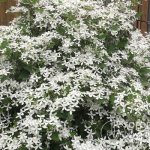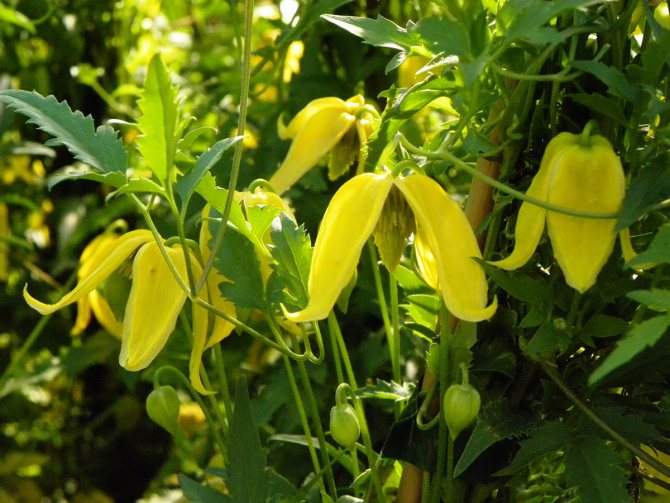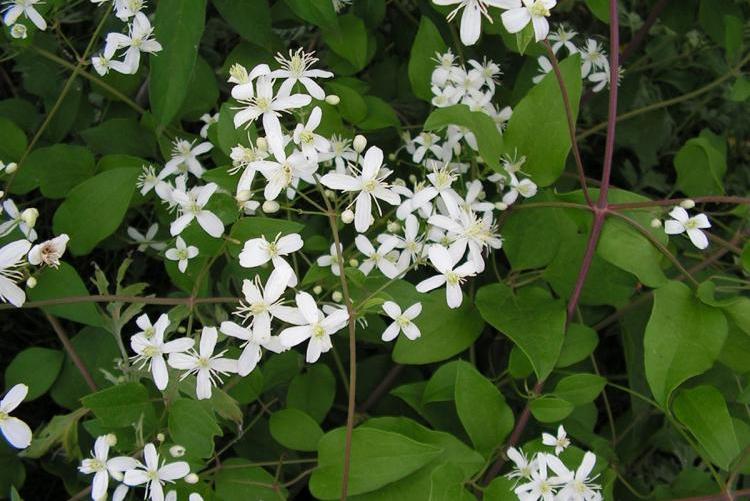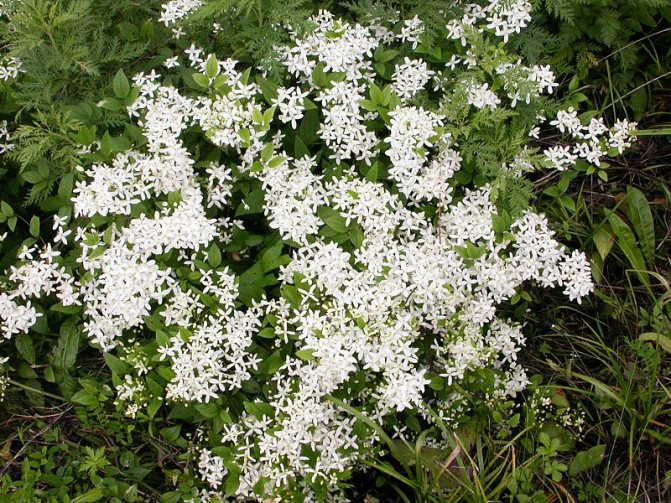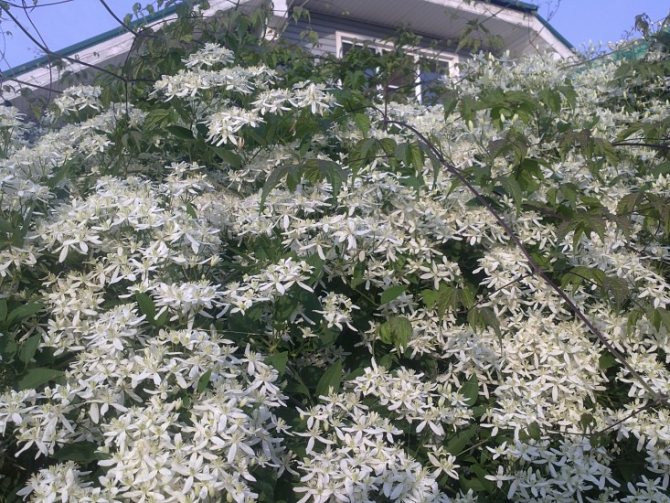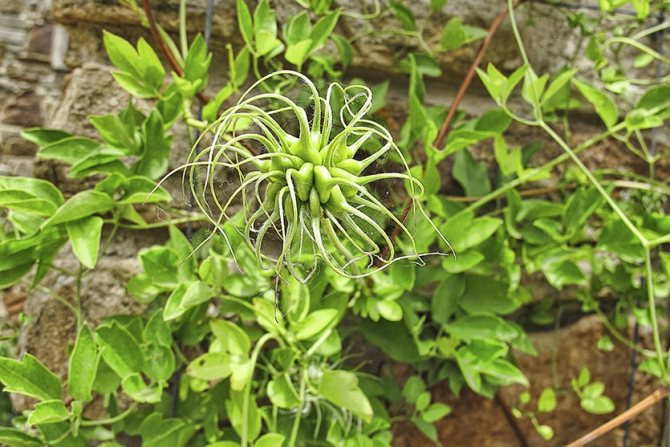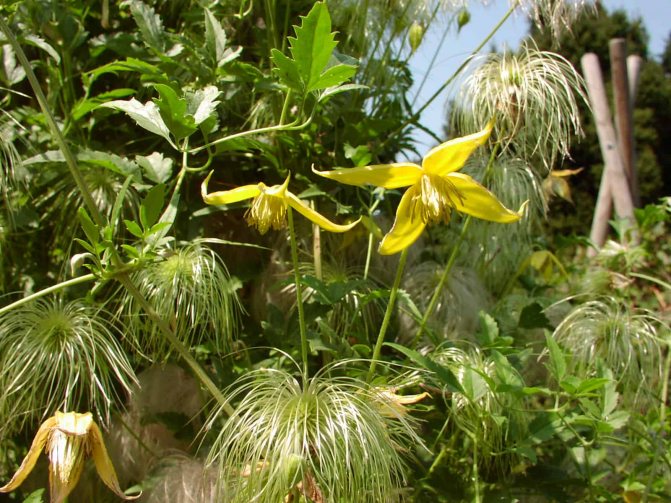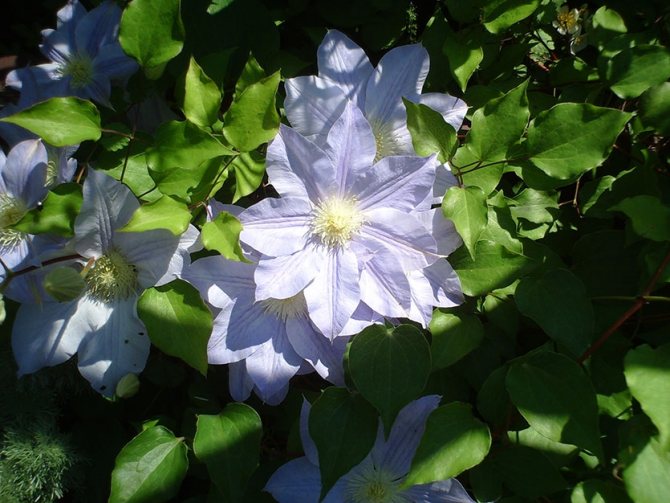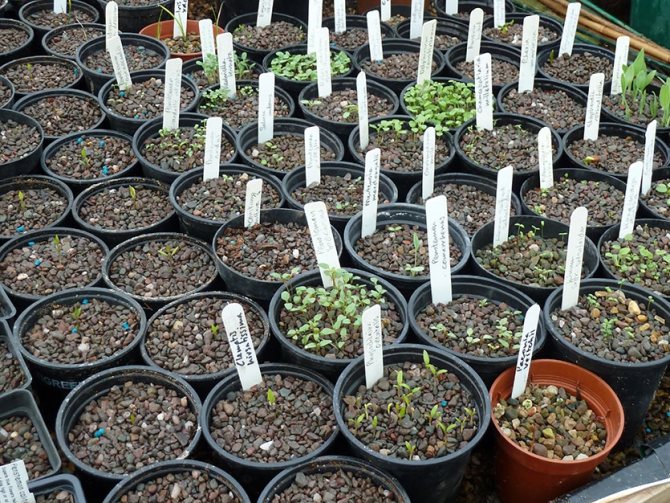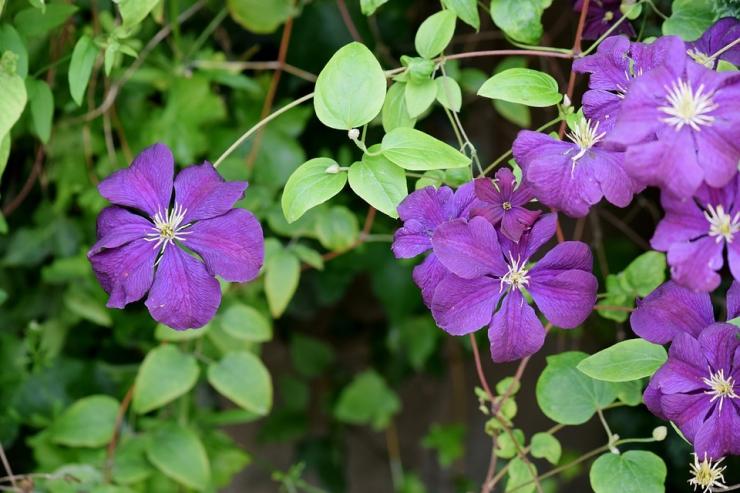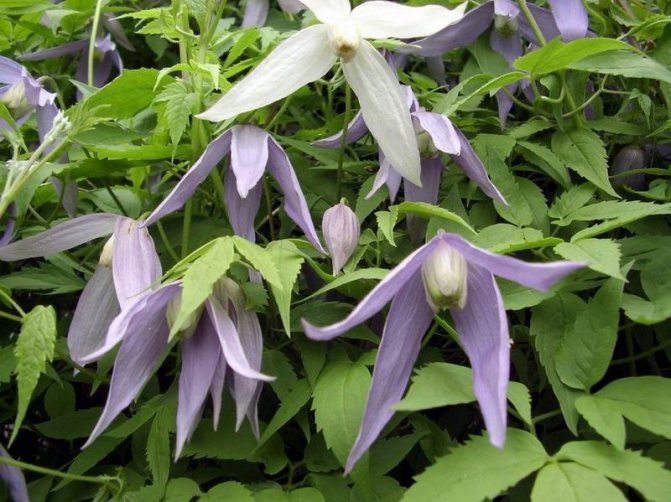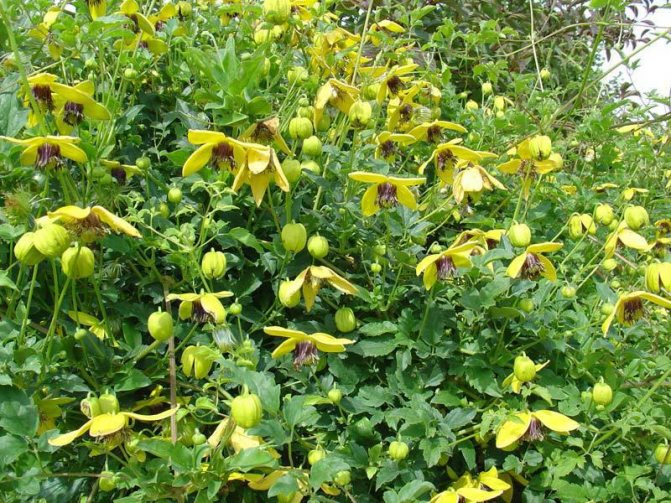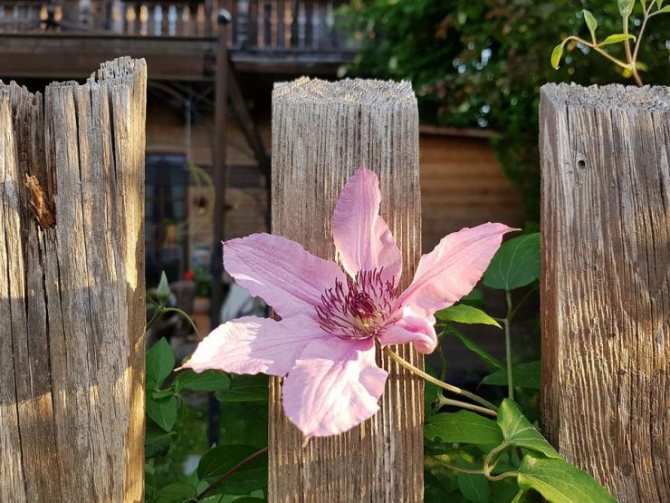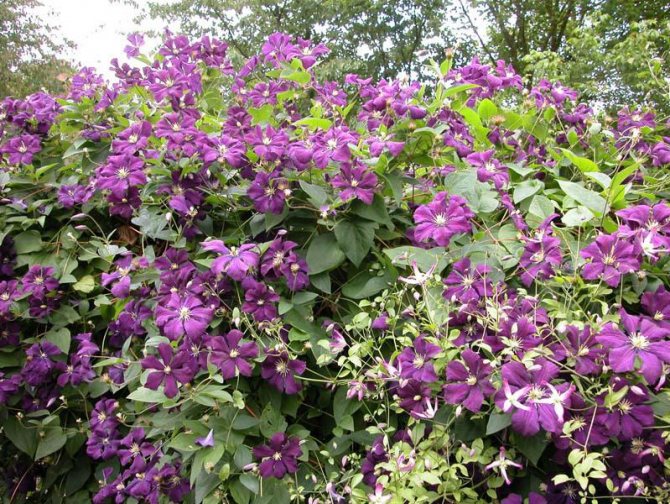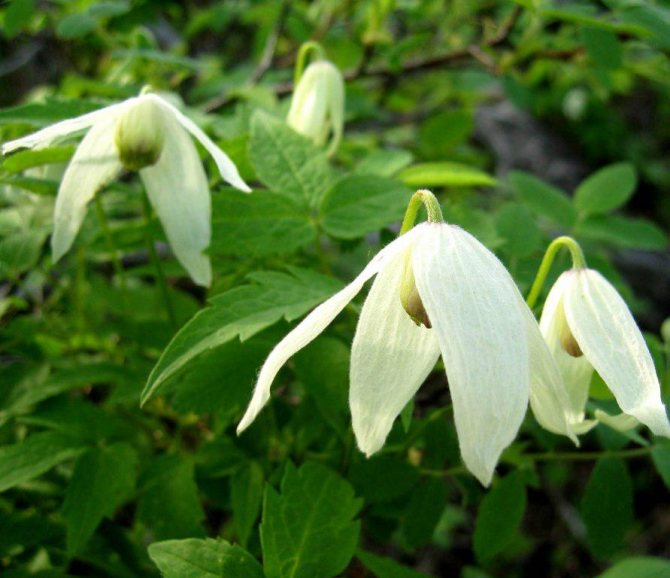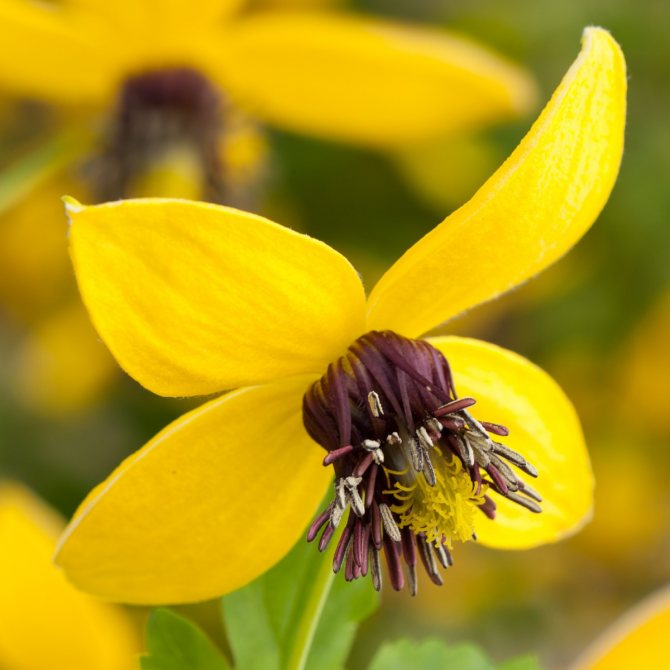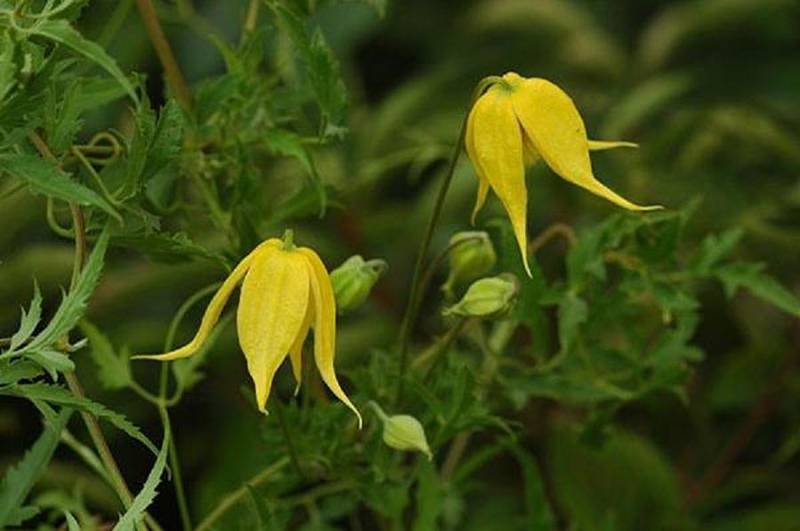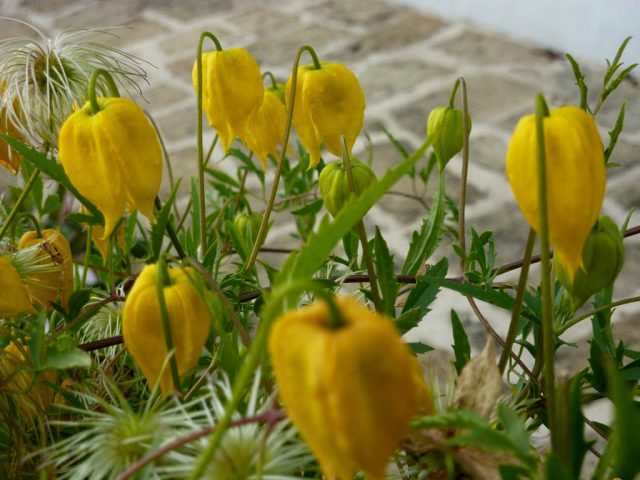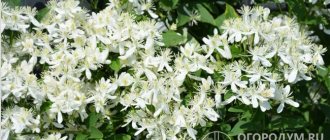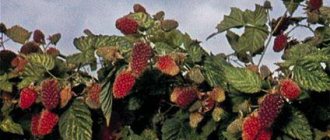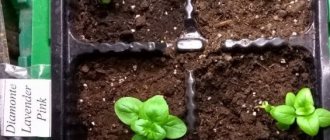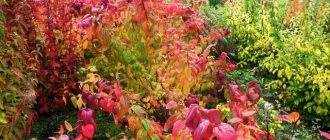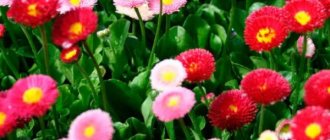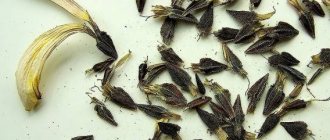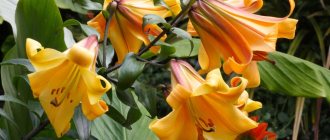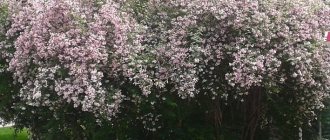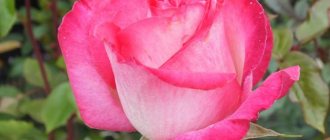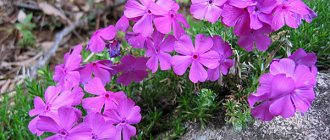Manchurian Clematis (Clematis manschurica) is a species (wild) liana with great potential for use in landscape design. Unfortunately, this interesting plant is still rarely found in Russian gardens. We will try to tell you in detail about its features, the specifics of cultivation and reproduction.
Manchurian Clematis (pictured) is a wild species, therefore it is unpretentious, resistant to adverse conditions and undemanding to care for
Consider the main characteristics of the plant in the table:
| Parameter | Characteristic |
| Genus | Clematis or Clematis |
| Growth form | Herbaceous vine |
| A type | Small-flowered |
| Group | Flammula-Recta |
| general characteristics | Creeping, small-flowered, unpretentious plant |
| Appointment | Ground cover and vertical (requires a garter to the supports) landscaping in landscape design |
| Life cycle | Perennial |
| Reproduction methods | Seeds, cuttings, layering |
| Shoot length | Up to 1.5 m (less often up to 3 m) |
| Flowering type | On the stems of the current year |
| Flowering period | In the middle lane: July-August |
| Sizes of flowers | Up to 2 cm in diameter |
| Coloring flowers | Petals are white, anthers and stamens are light yellow |
| Trimming group | It is not included in the traditional pruning groups (at the end of the seasonal growing season, the aboveground part of the plant dies off) |
| Sustainability | Frost resistance and drought resistance are high; susceptibility to major diseases of culture is weak |
| Registration in the State Register of the Russian Federation | Turned off |
Description of clematis Manchu
This culture has long branched stems, as it is a vine. It grows up to 3 meters, winds upward, braiding all the relief surfaces in its path. Due to this, clematis is used for landscaping personal plots, park areas, and any vertical surfaces.
Clematis leaves are complex, consisting of 3–7 small sheets of dark green color. Inflorescences of a Manchurian flower appear only on young shoots of the new year. To increase the number of buds, clematis is pruned for the winter. Clematis flowers are white, small, densely growing. The inflorescence consists of 4 oblong petals. One shoot grows from 150 to 500 buds. Warming up in the sun, they begin to exude a strong aroma. It can be heard even a few meters from the bush.
Important! If there are allergy sufferers in the family, then clematis is not recommended to be planted near the dwelling. The strong scent of the Manchu flower can trigger an attack.
Frost resistance, drought resistance
Manchurian clematis grows in well-lit, open areas with abundant watering. It tolerates winter frosts well. If you prepare it and wrap it up for the winter, it will not die even at -40 ° C.
Moisturization is necessary for clematis moderate. Shrubs should not be planted near groundwater. But he also does not tolerate drought. Clematis dies under the influence of strong winds and drafts. You should not plant Manchu clematis in the northern side of the site. It grows better in the sun than in partial shade. It tolerates temperature fluctuations well. Cultivation of Manchu clematis will not cause much trouble to the owner.
Disease and pest resistance
Dangerous pests for Manchurian clematis are slugs, snails and spider mites. They are fighting with it with the help of acaricides - chemical preparations for the destruction of agricultural pests. Slugs and snails are collected by hand.
The main diseases that Manchurian clematis is susceptible to
- fungal infections;
- gray rot;
- powdery mildew;
- rust.
It is necessary to treat the bush with a solution of foundationol or Bordeaux liquid. Gall nematode is a particularly dangerous pest for clematis. The worms infect the rhizome and the plant dies. They can only be dealt with by uprooting and burning. When buying clematis, you must carefully examine the roots.
Pests and diseases
Clematis is susceptible to certain diseases and pest attacks. Powdery mildew, gray rot and rust are removed with folk remedies. You can spray the plant with soapy water or foundation.
A tobacco solution and rogor will save clematis from the invasion of aphids. It is also necessary to spray all parts of the bush with these products. But when infected with a root gall nematode (swellings appear), the plant should be completely dug out as soon as possible and burned.
It is necessary to destroy clematis if it is affected by wilt. The disease is characterized by wilting of the bush.
Planting clematis Manchurian
Clematis is planted in the autumn-spring period. In order for it to take root and grow quickly, it is necessary to take into account the peculiarities of the soil, choose the right Manchurian seedling and the landing site.
Recommended timing
Any warm season is suitable for planting a clematis seedling in open ground: spring, summer, autumn. The main thing is that the air temperature is above +5 ° С. A Manchurian flower with an open root withers quickly - planting is carried out immediately after its acquisition.
Choosing the right place
Clematis Manchu grows well on the sunny side of the site. The bush is planted a meter from the support. The root system needs room to grow. You should not plant a flower under drainage - clematis does not accept excessive moisture. It is also important to make sure that the groundwater is deep enough so that the root will not rot.
Important! The windy side of the garden is not suitable for clematis - it withers from drafts.
Selection and preparation of planting material
You can buy a healthy seedling in specialized nurseries. It should be inspected carefully before purchasing. Shoots and root system should not have creases, damage, pest larvae. The leaves are clean, without white or red spots, ulcerations.
Landing algorithm
A few months before planting, the soil is prepared: they dig it up, loosen it, apply fertilizers. For a seedling, they dig a hole 60 cm deep and wide. Fill it by a third with a mixture of soil with sand, peat, humus, wood ash in equal parts. If several clematis are planted, the distance between the holes is made at least 1 m. The support is mounted before planting so as not to damage the roots.
Agrotechnics of planting clematis Manchurian:
- The seedling rhizome is soaked for several hours in a solution of water and a growth stimulant.
- The pit is filled with crushed stone, expanded clay, small stones - this is drainage.
- This layer is covered with a prepared fertile mixture so that 20 cm remains to the top, watered.
- The seedling is placed vertically in the hole, the roots are straightened, covered with the remaining earth. It is necessary to make sure that the root collar is 15–20 cm closed. Only in this way will clematis develop a strong root system.
- After the soil is mulched, covered with peat and sawdust. A clematis seedling is attached to a support, watered abundantly.
Manchurian clematis will begin to grow vigorously after 3 years. Flowering can be observed in the 5-6th year.
Plant in lighted areas
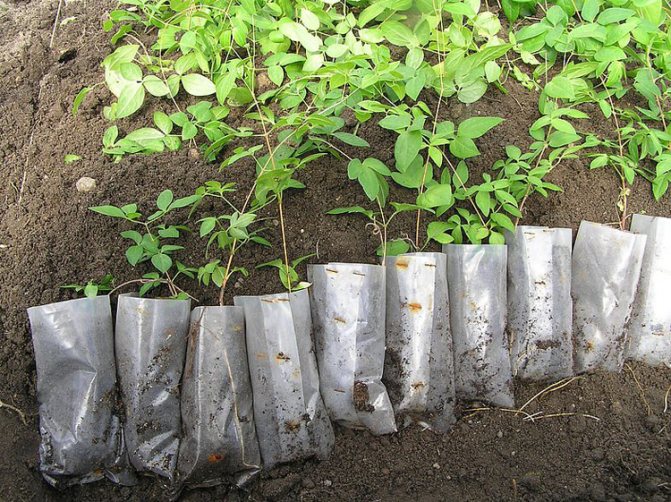
Clematis can be propagated independently or you can buy ready-made seedlings. Photo:
- Choose quality planting material in specialized nurseries, if there is no way to propagate clematis on your own. Examine the seedlings: they should be free of damage and cracks, the root system should have at least 2 strengthened roots 10-15 cm long.
- Choose your landing site carefully... Clematis love well-lit areas, however, at peak solar activity, the presence of partial shade in the area is desirable. To do this, you can plant a vine next to another plant.
- Try to pick up a site on a hillso that the groundwater does not harm the roots, which can reach 1 meter depth.
- Fertilize and drain the soil before planting seedlings, to saturate it with nutrients and air.
- Prepare a pit of the required size, about 60 cm deep and 60 cm wide, so that the root system can sit comfortably.
- Prepare a nutrient mixtureby mixing the soil with compost, peat and sand. You can also add superphosphate, lime and ash.
- Fill the hole with drainage material, crushed stone or gravel is suitable for this.
- Install a support for the vinethat will support the shoots.
- Watch the root collar when planting clematis, it should be 5-10 cm deep.
- Mulch the bush after planting sawdust or peat.
Cultivation of Manchurian clematis from seeds
Clematis propagates by shoots and seeds. The latter method is rather laborious and time-consuming. You can get Manchurian clematis from seeds at home 2 years after sowing.
Timing
From the seed, strong shoots will develop, which are planted in open ground in the spring. All this time they are kept in wooden and plastic seedling containers. The optimal time for sowing is February-March. After 1.5 months, the first shoots will appear.
Tank and soil preparation
For planting, wooden or plastic seedling boxes are suitable. They are filled with a mixture of garden soil with sand and peat in equal parts. Such soil promotes air circulation, moisture does not stagnate.
Important! Before planting, the seeds are soaked in a small amount of warm water for several days. So they will rise faster.
Sowing clematis Manchurian
For planting, take the seeds of the current year. They will give the highest germination rate. Choose a dry seed without damage to the protective layer. The seed is not thickly laid out on the surface of the moistened soil, it is not recommended to deepen it. Sprinkle with sand on top. A few hours before sowing, the filled boxes are placed in the refrigerator. This will harden the seedlings.
Manchurian clematis grown from seeds is a thermophilic perennial, germinates at a temperature of +25 ° C. For insulation, the box is covered with a film, several holes are made. Air supply is essential for the correct growth of the seedlings. To prevent the seeds from being washed out, pallets are used for watering.
How to grow Manchurian clematis from seeds
In the spring, when the outside temperature approaches + 20 ° C, the boxes with crops can be taken outside. This is provided that there are already 2-3 leaves on the sprouts. Avoid direct sunlight. In winter, the container is insulated by covering it with foam.
Transplanting flowers in open ground
A year later, in the spring, the grown seedlings can be planted in open ground. This is done after the night frosts have stopped. The distance between the seedlings should be 20 cm. In autumn, as soon as the temperature drops to + 5 ° C, the shoots are covered with a film. After 2 or 3 flowering, the bush is transferred to a permanent place.
Gardeners reviews
KONDRATUKL
The first year Clematis did not bloom. I covered it for the winter so that it would not freeze. And in the spring of 2012, strong shoots appeared, then curly stems appeared. Around the month of July, my Clematis bloomed. Its flowers are single, bell-shaped, golden-yellow in color on long pedicels.
FARDO88
In subsequent years, the vine gains weight and height up to 5 meters. It blooms very beautifully from July to September.Combining, like flowering inflorescences and fruiting already, the branches of the vines. The fruits of Tangut clematis have flying seeds with a peculiar tuft, collected on the cob. Very decorative.
Manchurian Clematis Care
To prevent the plant from dying, rooting well and blooming, it is necessary to provide it with proper care. It is important to follow the rules of watering, do annual pruning, and insulate clematis in winter.
Watering
Manchurian clematis does not tolerate excess moisture, but its lack also leads to poor growth. In the summer, 2-3 watering a week is carried out, they take 20 liters of water per bush. Water is poured not at the root, but around. In spring and autumn, 1 watering per week and 5 liters of water are enough.
Top dressing
If during planting a soil mixture of sand and humus was introduced into the hole, clematis is not fertilized for the first year. The next year, it is poured with a solution of mullein and mineral fertilizers 3 times per season. Fresh manure is not used for irrigation.
The fertilization schedule is as follows:
- nitrogen fertilizers are applied during the growing season;
- potash - during the formation of buds;
- phosphorus fertilizers are used during the dormant period after flowering;
- mineral - after pruning the bush.
Along with chemical fertilizers, organic fertilizers are used - manure and humus.
Mulching and loosening the soil
Clematis is a perennial from northern latitudes; it does not tolerate direct sunlight. You can protect the root system from overheating by mulching. Use dry bark of old trees, peat, sawdust. They cover the soil in the root area.
Loosening is necessary for air access to the rhizome. The knocked down earth restrains its growth, clematis withers away. To avoid this, loosening the soil is carried out after each watering.
Pruning
Manchurian clematis buds appear only on the shoots of the new year. Therefore, in the fall, all the processes are cut off. If you want a lush green plant in the new season, pruning is carried out to the first leaf.
Important! If you need to get a lush color, the shoot is cut to the ground.
Preparing for winter
Manchurian clematis is a frost-resistant culture and tolerates wintering well. But still it is worth covering it with fallen leaves for the winter. So that the root does not suffer from the flood in the spring, a small barrier is formed around the bush, a hill of humus.
Shrub shelter for the winter
The Manchu flower is insulated in late autumn, when the air temperature drops to -5 ° C. The cut plant is covered with dry soil so that a mound with a diameter of 60 cm forms above it. Peat can be used for the embankment. It will need about 4 buckets. If a fierce frosty winter is expected, the embankment can be covered with boards or roofing felt on top. When snow falls, such a structure will reliably protect the plant until the first thaw.
Diseases and pests, methods of control and prevention
The developed root system of Manchu clematis provokes debate and the development of fungal diseases. Withering occurs when the rhizome is damaged by their spores. Prevention of fungal diseases - loosening and drying the soil. The affected bushes are dug up, the root is cleaned from mold and returned to its place. After that, it is poured with a 0.2% solution of foundationol.
Plaques on leaves of gray, white and red color may turn out to be gray rot, powdery mildew, rust. Affected leaves and shoots are cut off, and the bush is treated several times with a 0.2% solution of foundationol. Can be sprayed with 2% Bordeaux liquid.
Nematodes of all kinds destroy the root system and the plant dies. It is dug up and burned. It has not been recommended to land at this place for several years.
Top dressing
With the arrival of stable heat, I feed the plants with mullein infusion (1:10), a bucket for each.
Two weeks later - Kemiroi-Lux. I pour a glass of wood ash under each adult bush and lightly embed it in the soil. The alternation of organic and mineral fertilizers gives a good result.
In the absence of fertilizing, the flowers become smaller. I pluck out the buds that appeared in the year of planting.
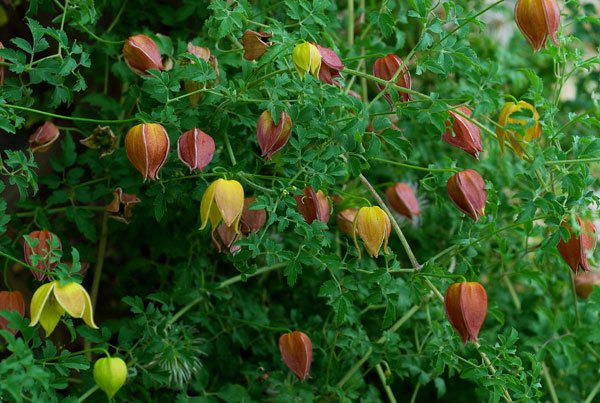

It happens that Tangut clematis loses its entire aerial part. In this case, do not rush to throw away the root. After a year or even two of the dormant buds, new shoots are likely to develop.
For rooting cuttings, I use pieces of fresh potatoes or beets. For faster rooting, I keep the cuttings in a solution of honey (1 tsp - for 1 tbsp. Of water). I cut the vegetables into cubes, pierce them on one side and insert the stalk into the hole.
I put the cubes with "landings" in a tray, where I pour a little water. Then you just need to remember to add water to the pan, as well as spray and shade the cuttings.
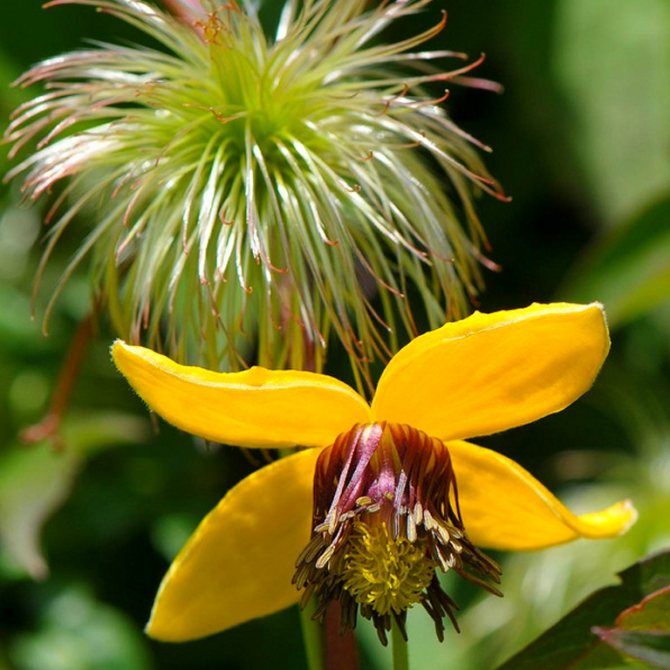

Walking through the summer cottage one winter, I noticed a "strange" liana, twisted around a fence made of a grid of hazel-trees. Imagine: everything is in the snow, and in front of you is an outlandish plant with fluffy shaggy balls covered with hoarfrost.
Finding myself in the same place in the summer, I did not immediately recognize the winter beauty. The fluffy balls, which so amazed me, only peeped in the delicate foliage here and there. But the most interesting thing is that the whole liana was covered with rather large yellow bells.
I decided to definitely have this plant at home, having learned that Tangut clematis (which is exactly what it is called) perfectly reproduces by seeds.
Features and description of clematis Manchu
Clematis belongs to the Buttercup family and is a perennial climbing plant. Depending on the species, there are herbaceous clematis, as well as shrub and semi-shrub. The name "clematis" in translation means "vine shoot", in another sense - "climbing plant". Also among the people there is another name for clematis - "clematis".
For the first time, clematis began to be cultivated in Japan, in Europe they began to spread in the 16th century and very quickly gained great popularity. The main feature of this plant is their incredible differences from each other. Depending on the variety, they can be deciduous and evergreen, large-flowered and small-flowered, with different colors of flowers. In total, there are more than 230 species of this exotic plant. On the territory of Russia, it is possible to grow deciduous varieties, since they are more adapted to our climatic conditions. One of the rarest types of clematis is Manchurian clematis.
Description of clematis Manchu:
- Clematis Manchu is a perennial herb.
- This plant belongs to lianas and is used for vertical gardening.
- The birthplace of Manchurian clematis is the Far East of Russia, East China and Korea.
- It is a species clematis, sometimes it is considered a form of direct clematis.
- Its stems are very branched, clinging to the surrounding structures or plants, not lignified.
- Manchurian Clematis has a pungent taste and pungent odor. Due to its burning sensation, it can irritate the mucous membranes.
- The leaves have a complex structure, they consist of 3-7 smaller leaves.
- The flowers are small, collected in numerous inflorescences.
- Clematis blooms on the shoots of the current year in June-July, on one shoot there can be from 150 to 500 flowers at once.
- The flowers are white and have 4 oblong petals.
- The height of this herbaceous liana reaches an average of 1.5 meters, less often it can grow up to 3 meters.
- This type of clematis has a pleasant fragrant smell, which is especially pronounced in a sunny place.
- Manchurian clematis is one of the most unpretentious species, which perfectly adapts to our conditions.
- The advantage of this species is that it blooms on the shoots of the current year, which means there will be no difficulties with pruning.
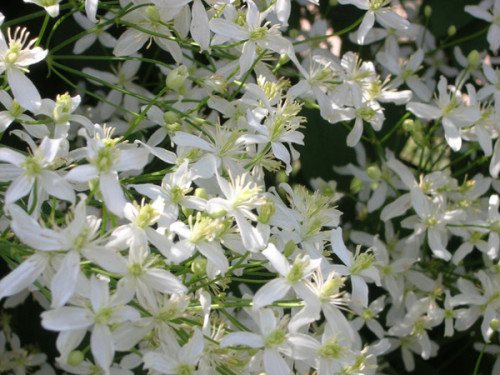

Photo of clematis Manchurian in landscape design
All the features and beauty of this type of clematis can be seen in the photo.Clematis Manchurian is an excellent option for landscaping the site and decorating gazebos, terraces and walls of the house.
Use for entwining gazebos:
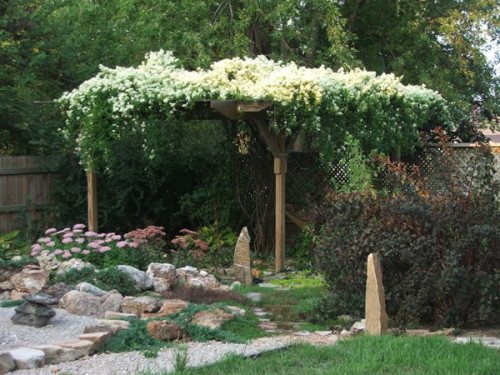

Planting Manchurian clematis to decorate trellises:
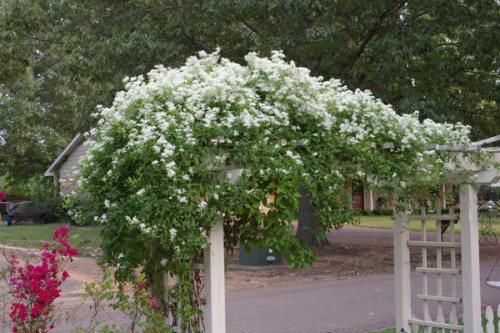

Using clematis for landscaping the site:
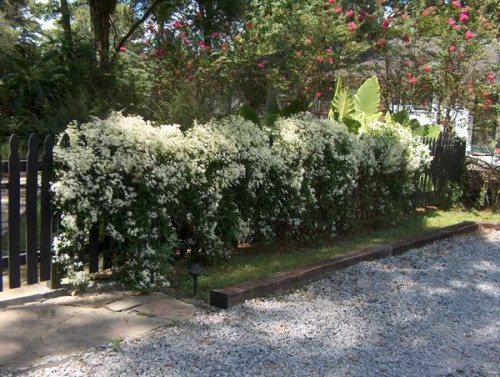

Basic description
The plant is known to those flower growers who decorate arches, gazebos or some kind of fences on their site. Many varieties are known, but Love Radar is the most popular among lovers of greenery and flowers. This vine really transforms the appearance of the suburban area with its spectacular flowering and curly shoots.
The plant has been known for more than 100 years and is considered its homeland in the west of China and Mongolia. Clematis is a herbaceous and woody perennial, belongs to the Buttercup family.
Under natural conditions, it grows both in forests and in the steppe expanses.
And since clematis loves moisture and warmth, these vines can be found near various bodies of water. In our area, it has gained great popularity due to its unpretentiousness and excellent frost resistance.
- If there is a support, then the plant is able to stretch up to 3 meters.
- Differs in dense branches. Looks great as a hedge.
- The flowers are elongated in shape, the petals are lemon or pale yellow pointed upwards. When the flower is not opened, it resembles a box with sharp edges; when opened, it looks like a bell about 4 cm long, consisting of four petals.
- Vine blossoms continue throughout the summer season, until the very cold.
- More than 100 flowers are located on the branches of the plant. During flowering, they droop down.
- At the end of the summer season, silvery inflorescences with fruits appear on the shoots. Often, unusual inflorescences and the flowers themselves are used by florists for flower arrangements and for decorative decoration.
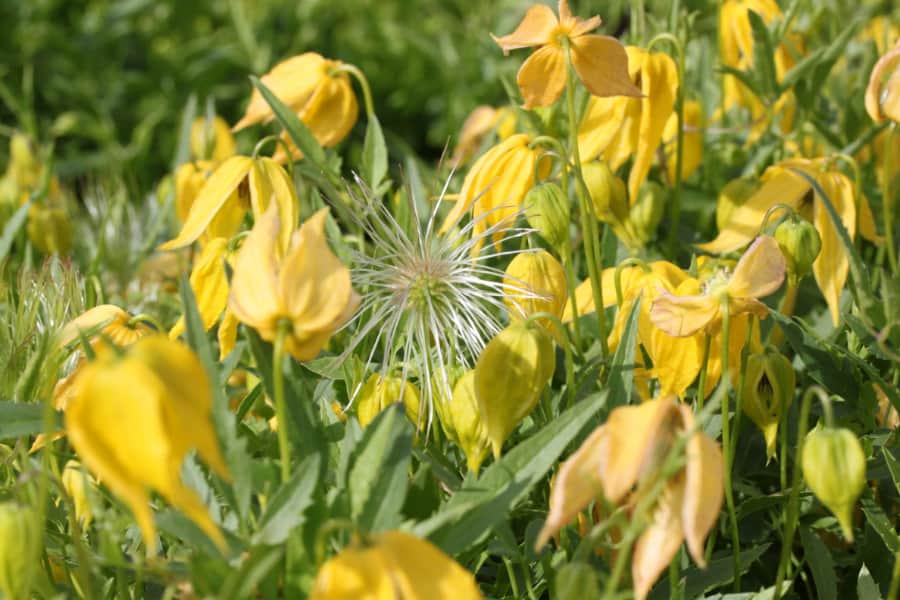

There are many varieties of clematis Tangut: Grace, Anita, Bill Mackenzie, Golden Falls, Locator of love. They all differ in the height and shade of flowering. The locator of love has bright yellow flowers and sometimes reaches a height of 4 meters.
Before planting a vine on your site, it is advisable to study well the characteristics of the variety so that your plant is harmoniously combined with other flowers and shrubs on the site.
Reproduction of Manchurian clematis
Manchurian clematis is a species plant, therefore, like all representatives of the species, it reproduces both by seeds and vegetatively.
Reproduction of clematis Manchurian seeds
Depending on the size of the seeds, the planting time also changes, which is very important for obtaining friendly shoots. Clematis Manchu has medium-sized seeds, so the optimal time for planting is February or early March. In this case, young shoots will appear in 1.5-6 months. Before landing, it is necessary to carry out preparatory measures:
- It is best to use the planting material of the current year, it is more likely to get more seedlings.
- Seed stratification can be done prior to planting, but this is not necessary. But since clematis seeds are poorly stored, you can start hardening immediately after collecting them. So that they are ready by the time of landing.
- For better germination, the seeds can be soaked in water for 5-7 days.
- For sowing seeds, wooden boxes or containers are suitable.
- A soil mixture consisting of sand, peat and garden soil in equal proportions will be optimal for plant growth.
- Seeds are sown on the soil surface and sprinkled on top with a thin layer of sand.
- Since the ideal temperature for germinating seeds is 25-28 degrees, the boxes should be covered with glass or foil.
- It is imperative to water and moisten the soil in the future. Use the pan irrigation method to avoid washing out the seeds.
- After the first leaves appear, you can move the boxes to a lighted place, but not in direct sunlight.
- In the spring, you can transplant mature seedlings to the garden bed, at a distance of 20 cm from each other.
- For the winter, the bed must be insulated, and in the spring, young clematis are transplanted for growing.
- The plant is planted in a permanent place after 2-3 years, after the first flowering.


Propagation by cuttings
This method is the simplest and less troublesome, therefore it is recommended for beginner gardeners and hobbyists. Cuttings are very easy to plant and root quickly, while they do not require constant and complex care.
- Reproduction in this way should be carried out in the spring during the period of active growth of Manchurian clematis.
- It is recommended to harvest planting material in the form of cuttings when buds appear on the plant. This will facilitate the rapid establishment of the young plant.
- When pruning, remember that one clematis should be cut by no more than one-third of the vine.
- Then it is necessary to divide the resulting planting material into cuttings of the desired length.
- Each cutting should have 1-2 knots and divide them correctly. From above, the cut is made straight 1.5-3 cm above the knot, the lower cut is made at an angle and the distance to the knot should be 5-10 cm.
- Next, you can process the cuttings with growth stimulants.
- Prepare the soil for rooting the planting material. Fertile soil with trace elements is suitable.
Reproduction by dividing the bush
Bushes that have been growing in one place for 5-6 years are suitable for such breeding methods. The best time to divide the bush is autumn, so clematis will tolerate this procedure painlessly. It is necessary to carefully dig out the clematis bush and get it along with the earthen lump. Next, very carefully divide it into two parts. Make sure there are intact roots and buds in each part so that the plant begins to bloom. After dividing, two bushes are planted in a permanent place. Often this method is used for clematis, which are capable of strong tillering and need rejuvenation.
Reproduction by layering
This method can be applied to the favorite variety of clematis. Shallow grooves are dug under an adult bush and selected shoots are bent to them. They must be healthy and strong. After that, the shoots need to be sprinkled with earth, leaving only the top. After a year, such shoots take root and can be separated from the adult clematis. After that, young bushes are planted in a permanent place.
Reviews of summer residents
Konstantin, 57 years old, Bryansk
A wonderful plant, "clematis for lazy people"! I wanted it for a long time, I was looking for it in online stores. True, I did not receive it right away: for the first time they sent it, as it turned out later, burning. But now I have grown for the fifth year and Manchu clematis, requiring almost no care. The original copy was planted by the fence. In the summer, I periodically direct the lashes so that they do not fall down, I water them in the heat. I do not cover for the winter, I only remove the dried stems with a rake. The roots winter well, in the spring the shoots grow right before our eyes. They bloom violently from late June to mid-September. Last year I made horizontal layering and got a couple of good seedlings. Now they decorate the alpine slide: they serve as a wonderful backdrop for other flowers.
Vera, 47 years old, Oryol region
This clematis came to me by accident. One day in the spring, I found several sprouts under the fence. Apparently, they grew "self-seeding" from a powerful neighbor's bush. The kids looked pretty cheerful, and I didn’t do anything with them. She just pinched the tops so that the roots grow better, but in the summer she watered so that they would not dry out. In the second year, they have already bloomed, and in the third year I transplanted them to a permanent place near the gazebo. When they bloom, beauty is indescribable. And what a scent! At the opposite end of the site you can feel it. They are my favorites now. Such a combination of beauty and unpretentiousness is rarely seen. An excellent plant for decorating the site. I recommend it to everyone and give away the seeds to my friends.
Zinaida, 51 years old, Omsk
Species clematis are generally very decorative, and the Manchu clematis is also problem-free.You can feed it occasionally, water it only in severe drought. No worries about autumn pruning. The stems wither and dry out on their own, it remains only to remove them in the fall. I still mulch the soil over the roots for the winter: our frosts are long and strong. In the spring, the shoots "shoot out" and very quickly grow with a "cap". You can form a bush, run whips on the ground or on a support. It blooms with me from early July to mid-August. Not too long, but enough to admire the beauty and savor the wonderful scent. In my opinion, one of the most beautiful and convenient decorative lianas for the summer resident.
Preparation before landing
Cultivation of Manchurian clematis will be successful if you prepare correctly and carefully before planting. An important condition for obtaining a beautiful and abundantly flowering plant is the correct choice of place and soil for planting.
Choosing a place for planting Manchurian clematis
This plant loves sunny places, so it should be planted in areas that are open to the sun most of the time. If you want to plant this vine near the walls of the house, choose any side except the north. Also keep in mind that it is impossible to plant Manchurian clematis close to the walls, it may not have enough space for development and the plant will die. When planting along the walls of the house, make sure that the plant does not pour water from the roofs - this can damage it.
Manchurian clematis will not grow in a place where groundwater lies close to the surface. This must be foreseen in advance and an elevated section of the garden must be chosen. Necessarily clematis must be protected from gusts of wind.
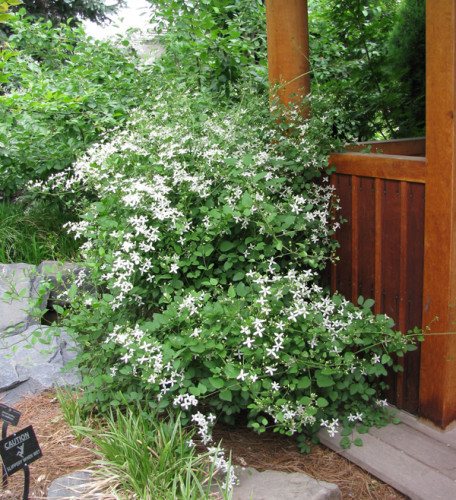

Selection and preparation of soil for planting
Manchurian Clematis prefers to grow on fertile soils, preferably on loamy or sandy loam. It is also important that the soil is light and that it allows air and water to pass through. It does not tolerate clematis and too moist soil and close occurrence of groundwater, even if this occurs for a short time.
Also, for the full growth of the plant, the soil must be rich in humus with a weak alkaline environment. Do not plant this plant on lime-rich soil.
The use of clematis tangut in landscape design
Usually in landscape design, clematis is used to achieve the following goals:
- low varieties use for framing garden paths;
- shrub vines well suited for decorating terraces, gazebos and walls outbuildings;
- with the help of such a plant you can hide various defects;
- vines well suited for arches, fences or gates.


Clematis varieties of Tangut will look beautiful as a decoration of various gazebos or terraces.


The main purpose of clematis is to decorate gazebos, terraces, balconies
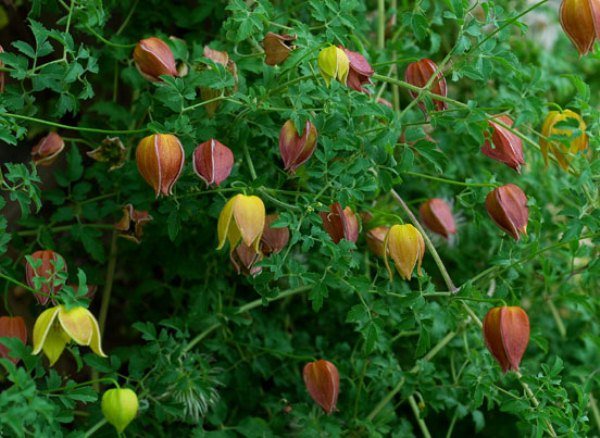

In landscape design, they can be used as the creation of bright spots on figured supports or in the middle of the lawn.
The process of planting clematis Manchurian
For planting Manchurian clematis with a closed root system, any time during the season is suitable. If you purchased a seedling with open roots, then you need to plant the plant immediately after purchase. Clematis is considered a long-liver; it can grow in one place for 15-20 years, so it is worth carefully preparing the soil.
Planting process:
- About a year before planting, you need to dig well and prepare the soil. If one plant is planted, then a hole is dug out and a fertile mixture of sand, garden soil, peat and humus is prepared, with the addition of mineral fertilizers and wood ash. With a group planting, you can dig up the entire area.
- For one plant, you need a hole 60 cm deep and the same width. There must be a distance of at least one meter between the plants.
- Before planting, Manchurian clematis seedlings can be immersed in water for several hours with the addition of growth stimulants.
- Be sure to pour a layer of drainage from broken brick, rubble or expanded clay into the dug hole.
- Next, pour out a part of the fertile land and form a small mound in the middle. After that, be sure to spill it well with water.
- Place a seedling in the pit and straighten the roots well throughout the pit.
- Then cover the seedling with earth. In this case, keep in mind that clematis must be buried. Therefore, cover the root collar 10-15 cm with soil. Only then can the plant develop a good tillering node.
- After planting, make an irrigation hole and mulch the tree trunk circle. Peat or sawdust can be used as mulch.
- Sprinkle abundantly with water and prepare the support. It is installed before planting or immediately after it, since later there will be a possibility of root damage.
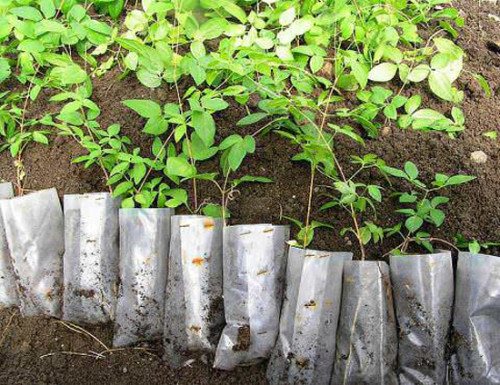

Clematis Tangut features of the variety


Tangut yellow clematis: photo
The bushes, as we noted earlier, have a powerful root system, well developed. Shoots also grow intensively. The leaves have a beautiful shape, as they grow, they begin to cling to any supports, so it is quite possible to build a beautiful openwork green wall from clematis. As the leaves develop, they fill the entire surrounding space, so they can completely green certain areas. Vines also cling to each other, so they fill the support area not only vertically, but also horizontally. The flowers of clematis are a bit like bells in shape. As we noted earlier, they are usually small. One flower has four petals. They are usually pointed, slightly elongated, with a characteristic yellow color. But the stamens are a little lighter. When the buds begin to bloom, they look a bit like a street lamp, but during the active flowering phase, they look like a perky bell. Clematis of this variety also sets seeds, therefore, the decorative properties of the shrub are higher than those of large-flowered counterparts. As the seeds are formed, the flowers become more attractive. It should be said that clematis does not bloom at the same time, on the bushes there are usually still unblown flowers and open inflorescences at the same time. This gives the plant a certain charm, besides, by blooming consistently, your garden will be incredibly beautiful throughout the season. And sometimes clematis blooms until the arrival of persistent frosts. Interruptions often persist. The seeds are formed towards the end of summer, and they can be harvested in the middle of autumn. Do not expect them to fall off on their own, the seed pods can sag on the shoots until next spring. Very often this culture is used for landscaping a personal plot, as well as for creating green fences, fences. You can plant these plants near any unsightly building, as well as near a gazebo or summer terrace. Landscape designers are very fond of clematis, because it can be used to create the most beautiful flower arrangements. With the help of clematis, you can even zone the site, as well as build a low alpine slide. In fact, the Tangut clematis has other varieties. Many hybrids have been bred on its basis. And now we will tell you about them.
Features of care for clematis Manchu
Further growth and development of the plant, as well as its abundant flowering, depend on proper care for Manchurian clematis.
One of the most important stages in the process of growing clematis on your site. This plant does not tolerate too much waterlogging of the soil, however, a lack of moisture can also affect the flowering and growth of clematis. At normal times, moderate watering is required, only on the driest days is it necessary to increase the number of waterings to 2-3 per week.Water it abundantly, about 20-40 liters per plant, and try to pour water around the plant, never in the center of the bush.
Loosening and mulching
The root system of Manchurian clematis does not like overheating in the sun, therefore mulching is important for it, which acts as protection. Peat, humus, sawdust or tree bark can be used as mulch. You can also plant low-growing plants near clematis, which will protect it from overheating. Loosening is also important for clematis. This should be done periodically after each watering.
Top dressing of Manchurian clematis
If the soil was carefully prepared when planting the plant, clematis does not need feeding in the first year of growth. Further, it becomes mandatory to apply fertilizers 3-4 times per season. Usually, a full range of mineral fertilizers is applied, which alternate with organic fertilizers - mullein solution. Fresh manure must not be applied. Fertilization schedule: vegetation period - nitrogen-containing fertilizer, bud formation stage - preparations with potassium content, after flowering - with phosphorus, after pruning - application of mineral fertilizers.
Manchurian Clematis belongs to the third pruning group, which includes plants blooming on the shoots of the current year. For such plants, pruning does not constitute an ore. After the end of the flowering period, all shoots are cut off. It is necessary to leave shoots up to the first leaf. But if you wish, you can cut it off completely, then there will be fewer shoots, but the flowers will be larger.
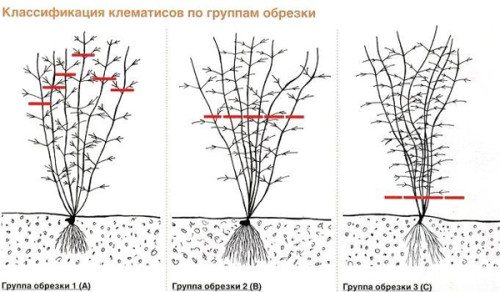

Disease and pest control
Diseases:
- Fungal. With fungal diseases, clematis begins to fade. This is a sign of damage to the root system. At the first symptoms, it is imperative to shed the plant with a foundationol solution and cut off the damaged areas. If the entire plant is damaged, it must be dug up and burned.
- Gray rot. This disease is manifested by a brown bloom on the leaves. When such a disease appears, it is necessary to cut off all damaged shoots and leaves, and also treat the entire plant with a foundationol solution. For prevention, you can pour clematis with foundationol twice a year.
- Powdery mildew. It manifests itself as a white bloom on the entire ground part of the plant. when such a disease appears, it is necessary to treat the plant with solutions of foundationol or topaz.
- Rust. When orange swelling appears on the shoots, it is necessary to treat with a solution of Bordeaux mixture.
Pests:
- Spider mite. If this pest is wound up on the plant, the leaves begin to turn yellow and the buds crumble. It is necessary to treat with acaricides.
- Snails and slugs. When they appear, you can put bait in the form of cabbage leaves and collect such pests manually.
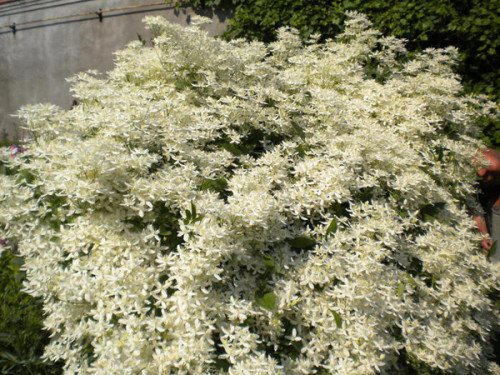

Popular varieties
| 1. Clematis Tangut Anita (lat. Clematis tangutica Anita) Description:
|
| 2. Clematis Golden Tiara (lat. Clematis tangutica Golden Tiara) Description:
|
| 3. Clematis Tangut Aureolin (lat. Clematis tangutica Aureolin) Description:
|
| 4. Clematis Tangut Bill Mackenzie (lat. Clematis tangutica Bill MacKenzie) Description:
|
| 4. Clematis Tangut Love Radar (lat. Clematis tangutica) Description:
|
Planting and leaving
Clematis Manchzhurskiy is very unpretentious and winter-hardy, it can be grown in most regions of Russia.
| Soil | any lungs, non-saline, from slightly acidic to slightly alkaline |
| Moisturizing | moderate, poorly tolerates stagnant moisture in the soil |
| Lighting | complete, grows well in full sun |
| Winter hardiness | high |
Growing from seeds
Before sowing, the seeds of Manchurian clematis should be soaked for 5 ... 10 days, changing the water 4 ... 5 times a day. This will increase germination and speed up germination.
Manchurian clematis seeds are best sown in seedling boxes or in open ground in the fall. If seeds are sown in boxes, they must be left outside for the winter. Stratification by low temperatures noticeably increases germination and germination energy; in winter, such seeds always germinate well.
There is a practice of growing clematis direct from seeds with stratification in the refrigerator. To do this, in mid-February, the seeds are soaked for several days, and then sown in bowls. 10 days after sowing, the bowls are transferred to the refrigerator, where the seeds undergo stratification for 2 months at a temperature of about 4 degrees. Seedlings appear in 2 ... 5 months.
Seedling care is the most common: moderate watering, weeding when sowing in open ground. If you sowed seeds in boxes, after the second pair of true leaves appear, the seedlings should be transferred to a greenhouse or outdoors, but cover them with a plastic bottle on cold days. In the second year, plants can be planted in a permanent place.
Planting clematis Manchurian and direct from containers
Sometimes on sale you can find Manchurian clematis seedlings. They can be planted in open ground during the entire growing season, but in summer only transshipment is allowed, and in spring and autumn you can take out the plant and rinse the roots. This is useful because wireworms are often found in containers. If damaged or rotten roots are found during flushing, they must be pruned, keeping the healthy part. After planting, clematis must be watered abundantly.
Landing scheme
The minimum distance between plants is 60 cm, the optimum is 75 cm.If the plants are planted in rows, it is better to make the distance between rows at least 80 cm.
Care
Caring for Manchurian and direct clematis comes down to watering during severe droughts, fertilizing with complex fertilizer before flowering and removing old, damaged, and so on shoots.
Clematis Manchu does not need pruning or covering for the winter. If you have very cold winters, you can add a bucket of dry peat to your bark collar. In this form, clematis winters well even in Siberia.
Diseases and pests
Pests of Manchurian clematis, if they exist, are not dangerous, and therefore are not described. From diseases, infectious wilting can pose a danger, but there are no publications on wilt specifically on Clematis recta and its subspecies. In general, the recommendations are the same as in general when wilt appears on clematis.
Reproduction
Clematis Manchu reproduces perfectly by seeds - this is the easiest way. You can also root green or lignified cuttings in wet pre-calcined sand. Treatment with a rooting stimulant is optional, but recommended. Layers take root even better - for this, the lateral stem of clematis is bent and pressed in place of the knot with a pin to the ground, after which this place is sprinkled with sand. After some time, roots are formed next to the buds, and the buds themselves give off shoots. Such a rooted plant can be separated from the mother plant.
We also recommend:
In nature, there are more than 300 species of clematis, which differ in the shape and color of the flower, and are also adapted to various climatic conditions. They are united by the incredible beauty of vines that will decorate any garden. Even the most fastidious housewife will find clematis to her liking. Today we'll talk about how to grow an extraordinary Manchurian clematis at home.
Things to Remember
- View: clematis Tangutsky.
- Varieties: Anita, Golden Tiara, Aureolin, Bill McKenzie, Rodar Love.
- Reproduction: seeds, cuttings, layering, dividing the bush.
- Planting and leaving: choosing a suitable site, creating a support, preparing a pit, providing a nutritious soil mixture, regular watering, caring for a tree trunk, proper feeding, preventing diseases, providing shelter for the winter.
- Diseases and pests: rust, gray rot, aphids, ascochitis, spider mites.
- Why does not it bloom: improper planting, improper watering, inappropriate lighting, poor root development, improper feeding.
Brief description of the plant
The homeland of the Manchurian clematis is the Far East, namely one of the historical regions of China, which gave the name to the flower. The word "clematis" in translation means "vine shoot" or "climbing plant". Lianas of the Manchu species do not at all resemble grapes, but they reach more than one and a half meters in length, forming a huge beautiful bush covered with small white flowers. The plant belongs to herbaceous perennials, sometimes it is also referred to one of the forms of direct clematis.


Clematis Manchu during the flowering period
This species has a pleasant, but very pungent odor, which is especially pronounced in the sun, so allergy sufferers should be careful.
The stems of this variety are very branchy and twist upward along any structure, be it a special arch or a wall. Liana has leaves of a complex structure, in which from 3 to 7 leaves are combined. The flowers are small, white, consist of four oblong petals and fold into inflorescences. One vine can be crowned with up to 500 flowers at a time.
This species is unpretentious and grows well in our climate, tolerates frost and temperature fluctuations, does not require special care. The most abundant flowering, as a rule, in June-July.
Clematis Tangut: description of the variety


Clematis Tangut clematis tangutica: photo
This clematis is also called yellow, and it appeared in Mongolia, in the western regions of China, as well as in some Central Asian regions. Under natural growing conditions, this shrub is considered stunted, usually clematis does not grow more than half a meter in height. However, vines fill the surrounding space very well, so such hedges resemble a real fence. In garden plots, clematis grows in the form of a shrub with many vines, and the length of the stem can even reach four meters. These plants belong to shrubby crops, by the type of flowering, it is small-flowered. Clematis develops a powerful root system, and the shoots grow very intensively. The shrub winds beautifully over supports, fences and fences. Landscape designers use clematis to create hedges if a support is installed next to it or any fruit tree or shrub grows.However, without additional "devices" the vine will not hold, so you can create only a green carpet, however, such landscaping is very often used to create interesting compositions. Clematis is considered a perennial plant, but it reproduces in a variety of ways, from planting clematis seeds of Tangut to dividing the bush. As we mentioned earlier, the shoots of the shrub are massive, up to 4 m long. Inflorescences are usually formed on annual branches, which is why it is so important to prune the plants. If all the shoots of clematis are old, then the culture will not bloom so intensely, but here it is important to take into account what exactly you are planting clematis for. If you want to plant greenery, then you do not need to cut the shoots too intensively, but if you want to please yourself with beautiful flowers, then pruning is simply necessary. It is also important to note that in normal climatic conditions clematis blooms all summer, which is why gardeners love it so much. But the flowers of the plant themselves are small, only a couple of centimeters in diameter. Tangut clematis has yellow flowers, and the stamens are light. It is not necessary to prune the plants before wintering, usually this shrub tolerates cold well. The crop is resistant to frost and drought, as well as to many diseases and pests. Unfortunately, this variety has not yet been included in the State Register of our country, however, perhaps this is a matter of time.
Growing Manchurian clematis at home
This culture is planted in the ground in autumn or spring. There are several factors to consider here.
Priming


Manchurian clematis prefers to grow on fertile soils, preferably on loamy or sandy loam
The plant is unpretentious to weather conditions, but needs nutritious fertile soil. In order for the bush to grow large and healthy, it is necessary to plant it in the correct soil. You can purchase a special substrate in the store or mix the following ingredients yourself:
- sand;
- peat;
- mineral fertilizers;
- humus;
- superphosphate;
- ash;
- lime.
If the ground is too wet, drainage is also laid out in the hole.
A place
The Manchu clematis is very fond of the sun, so it should not be planted in the shade. If you want the flower to braid the wall of the building, you can choose any one except the northern one. In this case, the plant must be planted at some distance from the wall so that there is room for development. You should also avoid places where water runs from the roof. If there are no buildings nearby, you need to take care of the support for the vines. Sometimes the plant is left to creep along the ground to form a flowering white carpet. Also, this culture does not like wind and strong moisture. Do not plant the plant in places where groundwater is too close to the surface of the earth.
Seedling planting process
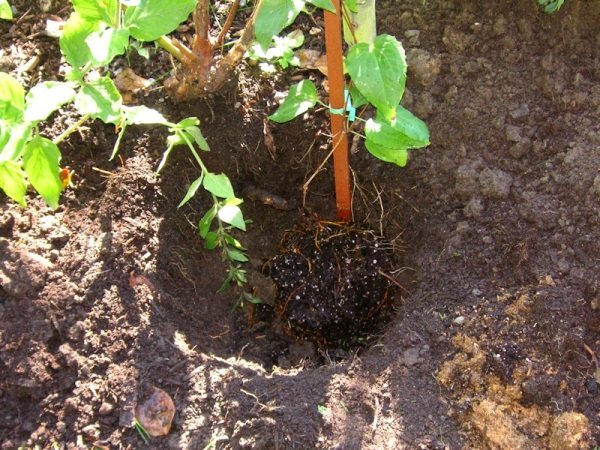

For planting Manchurian clematis with a closed root system, any time during the season is suitable, with open roots you need to plant a plant immediately after purchase
- a support for a plant is installed before planting, since after a high probability of damage to the roots;
- a couple of hours before planting, it is recommended to lower the seedling into water diluted with a growth stimulator;
- it is necessary to dig a hole with a diameter of about 60 cm and the same depth;
- it is necessary to lay out drainage here: broken brick or crushed stone;
- then part of the soil is filled up and watered;
- a seedling is laid out;
At this stage, it is important to distribute the roots well around the entire circumference so that the plant is better accepted.
- the root collar is covered with earth by about 15 centimeters;
- the final stage is abundant watering.
The plant begins to grow profusely after three years, and the thickest flowering is observed after 5-6 years.
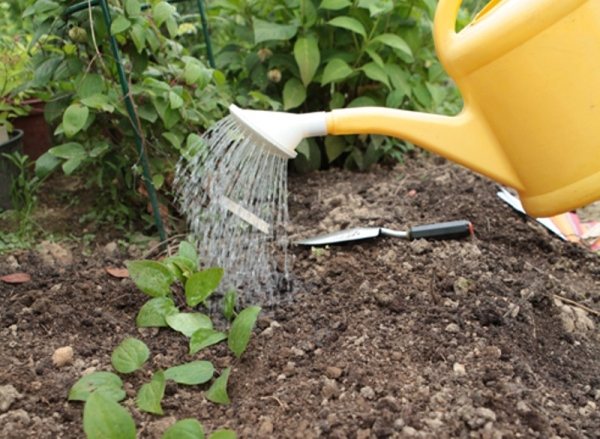

Clematis Manchurian does not tolerate too much waterlogging of the soil, however, a lack of moisture can also affect flowering and growth.
He does not like excess moisture, but he also does not tolerate drought, so the plant should be watered once a week, and during drought - 2-3 times. You need to pour water around the bush and try not to get on the leaves and flowers. Under one bush, you need to pour 3-5 liters of water, depending on the weather and the age of the plant.
Fertilizer
They begin to feed from the second year according to the scheme:
- growing season - preparations with a high nitrogen content;
- the stage of bud formation - fertilizers containing potassium;
- after flowering - fertilizing with phosphorus is applied;
- after pruning - mineral fertilizers.
In addition to chemical fertilizers, it is also important to use organic fertilizers, that is, humus.
Manchurian Clematis belongs to the third pruning group, which includes plants blooming on the shoots of the current year.
Manchurian clematis blooms on the shoots of the current year, so it will not be difficult to cut it. After flowering, absolutely all shoots are cut off.
If more shoots are important in the new season, the vine is cut to the first leaf. If large flowers are a priority, it is necessary to cut off the shoot completely.
Reproduction
Breeding clematis is possible in different ways. Self-propagation by layering or cuttings is considered the most common method.
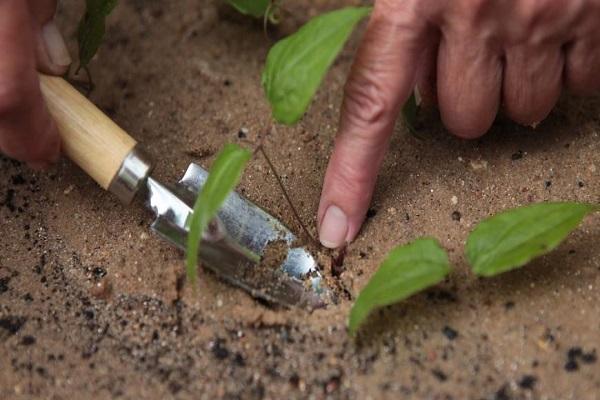

Seeds
Seeds are sown under glass or polyethylene on prepared soil. The seeds germinate for about a week, then the glass is removed from the surface. Seedlings are grown up to a certain age.
Cuttings
Cuttings are cut from the mother plant in the fall. During the winter months, they are successfully rooted at home. In the spring, cuttings are planted according to the planned scheme.
Layers
With the layering method of propagation, it is important to choose the right shoot. A shoot with developed buds is added dropwise, in the fall, with successful rooting, it is separated from the mother liquor and planted as an independent plant.


Reproduction methods
Manchurian clematis, as well as many other species: Tangut, brown, burning, isabel, semu and others, can be propagated in four ways:
Seeds


Clematis sprouts
They are sown in early March, and the shoots should appear in a month and a half. The seed is soaked for 5-7 days, and then sown in a container, which is covered with foil to maintain the optimum temperature. With the stabilization of the air temperature, the seedlings are transplanted to the garden bed.
Cuttings
About a third of the creeper is cut, on which buds have already appeared, then it is divided into cuttings of two nodes each. From above, the cut should be straight, about 3 cm from the node, and from the bottom - an oblique cut with a distance of 7-10 cm to the node. This operation is also done in the spring.
Layers


Reproduction of Manchurian clematis by layering
A groove is cut near the bush, where an adult shoot is placed and sprinkled with earth, leaving only the top. After a year, the rooted shoot is separated.
Hybrid varieties


Tangut yellow clematis: photo
- The first type of Tangut clematis is the tall Tangut Golden Tiara. Its flowers are slightly larger, but they also resemble a bell in shape. But the color of the petals is slightly brighter than that of other types of Tantut clematis, usually they are dark yellow, and the stamens are even darker.
- Another interesting variety is Tangut Clematis Love Radar. The branches of these plants are slightly shorter, no more than three meters in length. And the flowers are also slightly lighter, and in size, they are the same as those of the Tangut clematis.
- We are pleased to introduce you to Bill Mackenzie Shrubbery. This plant has very long shoots, but the flowers no longer resemble a bell, but a flashlight. The color of the flowers is the same, light yellow.
- Another variety of clematis has the beautiful female name Anita. In length, the shoots are quite voluminous, but the flowers are also medium-sized. Four or five petals are formed on them. It is worth noting that they usually do not open completely. Flowers are delicate, beautiful cream color.
- As you understand, the Tangut clematis has many varieties, they all have excellent decorative properties, the cultures are just as unpretentious, and it is easy and simple to care for them. Therefore, you can always choose any hybrid, clematis will definitely not disappoint you.
Breeding methods
Manchurian clematis reproduces in the following ways:
- using seeds. This process will take much longer than other methods. Transplanting young clematis to a permanent place is possible only 2-3 months after the first shoots appear.
- by cuttings. In the spring, young shoots are cut and planted in the ground.
- dividing the bush. For this, plants are chosen at the age of 5 years and older. In the fall, they are dug up and divided into parts. The resulting seedlings are planted immediately to a permanent place.
- with the help of appendages. You need to choose the shoot with the largest number of buds, bend it to the ground and cover it with soil. If the shoot is watered regularly, then soon you will have several rooted young clematis bushes. They must be separated from the mother bush and transplanted to a permanent place.
Vegetative breeding methods of Manchurian clematis are more effective than the seed method.
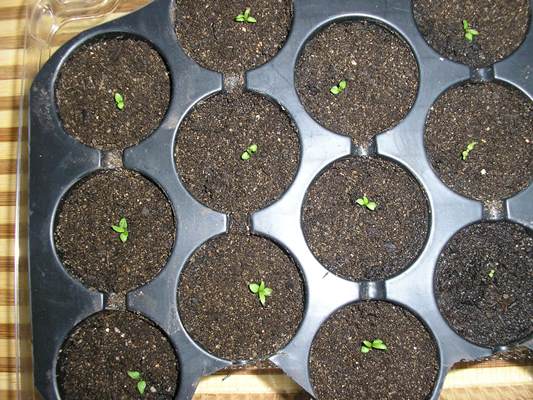

Where to buy clematis for seedlings by seeds
You can collect clematis seeds yourself, or you can buy them at a flower shop or in the market. The latter option is extremely risky, since there is a possibility of meeting with an unscrupulous seller and purchasing low-quality (or wrong) products.
This point is quite important, because the method of planting seeds is determined by the size and quality characteristics of the planting material itself. And if the seeds do not meet the declared quality in advance, then the result may be completely opposite to the expected one. Therefore, we strongly advise you to contact the services of trusted manufacturers and specialized stores.
Seed propagation by the method of 2-stage stratification
This method is mandatory for large-seeded and some small-seeded clematis (grape-leaved, serrate-leaved, etc.). Whether stratification is needed, indicate the packaging of the seeds.
- Sow the seeds as described above, keep the crops for 2 weeks at + 18 ... +20 ° C.
- Transfer to the refrigerator, the optimum temperature is + 5 ... +7 ° C. Stratification lasts 1.5–2 months. Check and keep the soil always moist weekly.
After these two stages, expose the crops to light and warm - about +20 ° C. Keep watching and moisturizing, wait for the shoots.
Video: sowing clematis serrata with stratification
Application in medicine
Not all types of clematis are used exclusively for decorative purposes, some of them are also used in other areas, bringing benefits to humans. So, for example, Manchurian clematis is effectively used in medicine.
For these purposes, the root system of the plant is mainly used, however, oriental healers sometimes benefit from the herb. Clematis is part of a complex herbal therapy for both internal and external use.
Healing properties
The healing properties of Manchurian clematis are widely used by specialists in oriental medicine.
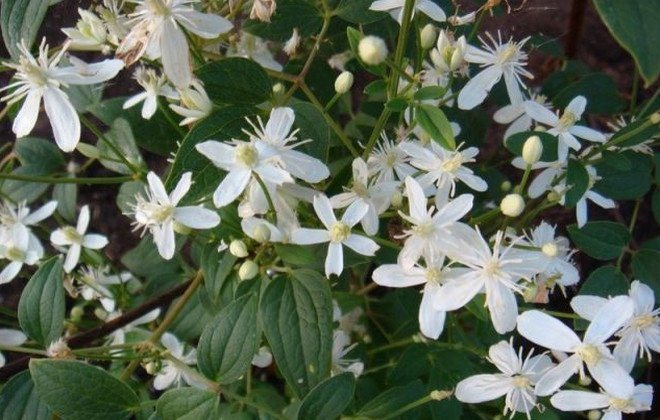

The main valuable qualities of the plant:
- used as an anti-inflammatory and antimicrobial agent, removes toxins;
- promotes the normalization of vascular blood flow;
- has an analgesic, decongestant effect, is used in the therapy of the musculoskeletal system;
- due to its unique chemical composition, it can resist some types of cancer. In complex therapy, it is an additional tool, increasing the effectiveness of chemotherapy;
- increases the secretion of bile, relaxes the muscles of the biliary tract, reduces inflammation and, thanks to this, is used in the treatment of diseases of the liver, gallbladder, as well as acute hepatitis, fatty degeneration of the liver;
- used to treat psoriasis, chronic eczema, scabies;
Learn how Crassula, Kalanchoe, basil, pine sap, dodder, goldenrod, Tibetan lofant, heather are used to treat many skin diseases.
- has a positive effect on the work of the hormonal system of women;
- used in the treatment of diabetes mellitus by lowering blood glucose levels.
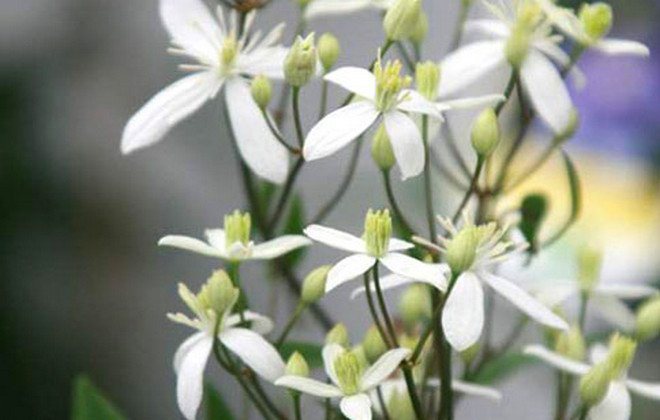

Tincture
To prepare a tincture on clematis Manchu, you can use the following recipes.
Herb tincture
Method 1: pour 20-30 g of dry grass into 1 tbsp. boiling water, place the liquid in a thermos and let it brew for half an hour. Drink 1/3 tbsp. three times a day.
Method 2: pour 20-30 g of dry grass with 60% alcohol and place in a dark place for 2 weeks. Periodically, the solution must be shaken, and at the end of the period, strain and take 20-30 drops three times a day half an hour before meals.
Root tincture
Place 1/3 of the crushed roots of the plant in a glass jar and pour 60% alcohol to the brim. Prepare the tincture for 2 weeks, occasionally shaking and stirring the contents. Take 10-20 drops three times a day. Effective as an aid in oncology.
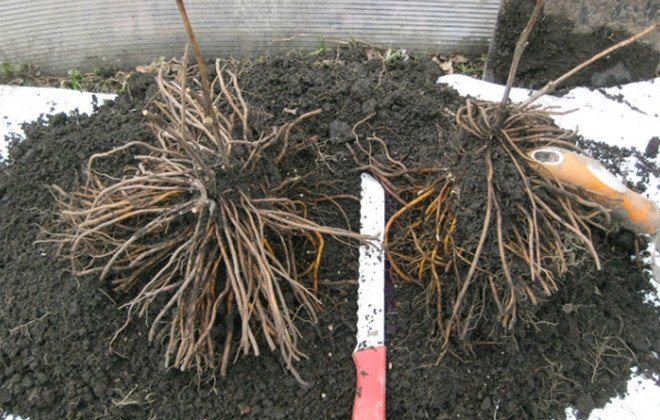

The use of the variety in decorating landscapes


Clematis of Manchu: photo
Far Eastern Manchurian clematis is an ornamental flowering clematis; it is used on a large scale to plant greenery in park areas and garden plots. A plant that braids brick walls, verandas, balconies or openwork gazebos looks great.
When designing landscapes, plants are planted in a vertical plane. Clematis braids the arches to create decorative transitions. Often, the variety is planted next to other flowering clematis varieties so that they braid the gazebos and hedges.
Clematis Tangut growing from seeds and caring for seedlings
Clematis are flowering garden plants, presented in both climbing and shrub forms. Clematis are valued for flowers of various colors and sizes. There are species growing in open ground both in the southern regions and in the middle lane and northern regions. Suitable for growing wild species, cultivars, hybrid forms derived from them.
The following types of clematis are most in demand:
- Alpine
- brown
- ordinary
- mountain
- Virginia
- straight
- disclosed
- Tangut
All of these species winter well and differ not only in endurance, but also in excellent decorative qualities. This also applies to clematis Tangut. Before growing Tangut clematis from seeds, it is worth familiarizing yourself with some of the features of the plant.
Content:
Clematis Tangut: description of the species
Clematis Tangut was first discovered in the wild in Asia, China, Mongolia. In the garden culture, it appeared at the end of the 17th century in England, and began to grow it more actively from the end of the 19th century. The plant is winter hardy and tolerates low temperatures down to -35 degrees. This allows it to be grown outdoors from the Baltic to Siberia and the Far East. In warmer climates or with winter shelter, it grows not only as a low-growing curb shrub, barely reaching 30 cm, but can also reach 180-400 cm, taking the form of tall, dense columnar plants.
Clematis Tangut attracts lovers of clematis with bright yellow flowers that look like wide bells, slightly drooping down. The diameter of the flowers is 4 cm, four sepals have pointed tops and are slightly bent outward. It can bloom with short interruptions, from the beginning of summer to the first October frosts. Flowers are formed on the shoots of the current year and there can be from 30 to 120 flowers. On summer flowers, seeds ripen by early September.
Even if autumn is not characterized by good weather and clematis does not bloom again, it retains its aesthetically pleasing appearance due to silvery seedlings. Florists use them to compose dry compositions.
Among the varieties recommended for landscaping are the well-known varieties of Aureolin, Lambton Park, Locator (radar) of love.
- Aureolin is a Dutch variety that grows in the form of a liana, the flowers are dark yellow, blooms in June and pleases with flowers until September. Used by walls or to decorate pergolas, arbors.
- Lambton Park is a liana four meters high, flowers are large, up to 5 cm in diameter. The first buds open in June, blooms until October. Undemanding to soil, but needs sunlight. Used in rocker landings, near walls and fences.
- Love locator - this variety is widely used for landscaping balconies and gazebos. The liana reaches a height of at least three meters. The yellow flowers are like little lanterns. At the end of August, fruits begin to ripen, which are also very decorative.
Clematis Tangut reproduces well by cuttings, they take root in 90 - 98%, but if it is not possible to get a cuttings, you can use the seed method of propagation.
Clematis Tangut from seed
Seeds for sowing Tangut clematis can be prepared independently or purchased in a specialized store. Seeds are harvested after they are fully ripe in mid-September. Freshly harvested seeds, as well as purchased ones, can be sown in several ways.
For the first method, it is necessary to prepare humus and glass jars with a volume of 0.5 liters. Place humus in jars to the top and moisten. Sow seeds and cover them on top with a thin layer of humus about 3 - 5 mm. This should be done at the end of autumn or in the month of December.
Cover the jars with plastic wrap and place in a room with low light.
The first seedlings begin to appear after about 12 weeks. They are brought into the light and after the appearance of the first leaf, they are transplanted (dived) into separate containers. It is advisable to plant seedlings in open ground in the first decade of June.
For the second method of sowing clematis Tangut seeds, planting boxes, clean river sand will be needed. In the boxes filled with sand, you need to sow seeds, sprinkle them on top with a layer of sand and place them in a greenhouse with a temperature of 18 - 20 degrees. Cover the boxes with glass to preserve moisture. After the shoots appear, but not earlier than April, the boxes are placed in film greenhouses. Those seedlings that have sprung up in the spring can be transplanted into the ground by mid-June. The box remains in the greenhouse, as seedlings can appear within several months.
The best germination results for clematis seeds are observed after the crops are kept at a low temperature for several weeks. To do this, it is enough to keep the containers with seeds on the bottom shelf of the refrigerator.
Seeds of wild Tangut clematis can be sown directly to the garden in April. Seedlings appear in a month. For successful cultivation, seedlings need to be properly cared for.
Care of seedlings of clematis tangut
Young plants of Tangut clematis need good lighting, but at the same time they must be protected from direct sunlight. In a dry and hot summer, you cannot do without abundant watering of a young seedling. This should be done at least once every three days. For clematis of the Tangut first year of life, one bucket of water with a capacity of 10 liters is enough; for an older plant, at least 30 liters will be required. In a typical summer, one watering every seven to eight days will be enough.
After watering, it is better to mulch the near-trunk circle with moss or humus. Throughout the warm season, it is necessary to remove weeds from the seedling and at the same time slightly loosen the soil, providing a better flow of air to the roots.
When clematis Tangut actively increases the ground part, it needs fertilizing with nitrogen fertilizers, before flowering - potash fertilizers, and during the flowering period - phosphorus fertilizers. After pruning, you can use a full compound fertilizer.
In order to prevent fungal and other diseases in early spring, you can shed Tangut clematis with a solution of azocene or fundozole. A 1% solution of copper sulfate will also help.
To prevent yellow mosaic, which is practically impossible to treat, do not place clematis next to neighbors such as: hosts, aquilegia, phlox. If the cause of the disease of Tangut clematis was a leaf or root nematode, then it should not be grown in this place for several years.
Before the onset of winter, a bucket of humus must be added under the clematis bush, having previously processed the basal neck with copper sulfate. Then you can install a plywood box over the plant, cover it with plastic and sprinkle it with earth.
Having overwintered under such a shelter, in early spring the plant will start to grow and already at the beginning of summer Clematis Tangut will delight with yellow stars of flowers.
Features of planting, care and reproduction
The rules for planting Manchurian clematis and caring for an adult liana are almost similar to the agricultural technology recommended for bush varieties of culture. The planting pits are "filled" with fertilizers, while regulating the acidity of the soil with the help of "alkalizing" or "acidifying" additives. In areas with a high level of groundwater, fill beds are formed in advance and drainage grooves are built, and layers of gravel, crushed stone or broken tiles are laid on the bottom of the pits. The seedling is buried in the soil 10-15 cm above the "tillering point" to ensure optimal conditions for root growth. Further care comes down to watering in extreme heat, removing excess stems that over-thicken the bushes, applying dressings and treating with drugs that protect against pests (as needed).
Trimming group
Plants of this species do not need pruning at all for the winter in the sense in which it is customary for large-flowered clematis. At the end of the growing season, the entire aboveground part of the bushes withers. Most gardeners remove dry stems in the fall simply so that they don't interfere with the rapid growth of new shoots in the spring. In regions with long, harsh winters, the soil above the rhizomes is covered with a thick layer of mulch, but in areas with a milder climate, the variety normally hibernates without shelter.
Planting and breeding
Usually, seedlings are placed in well-lit places near low walls, fences, alpine slides and other objects on which it is easy to lay "creeping" stems of vines.
To create a vertical "wall", trellises are arranged, to which flexible shoots are tied up as they grow. In this version, the bushes can be grown on a balcony or loggia, used to decorate gazebos, verandas and high fences. The variety looks great in combination with large-flowered clematis (especially those that have flowers of bright colors or "velvety" texture). Its flowering shoots are often made a "background", highlighting the beauty of rose bushes and other ornamental plants.
For gardeners who already have Manchurian clematis on their plots, the question of how to propagate the plant practically does not arise. Unlike the large-flowered forms, this species is easy to grow from seed. Sowing is done in autumn or spring in pre-prepared soil in areas well lit by the sun. Seedlings appear at the moment when the soil warms up to a temperature not lower than +25 degrees. Planting needs frequent watering, regular weeding and careful loosening of the soil in the root zone. Young shoots should be pinched to ensure that the seedlings can quickly build up the necessary root mass. For the winter, young clematis are covered with a thick layer of mulch. The first flowering occurs in 2-3 years, after which the plants can be transplanted to a permanent place. In this way, a large number of seedlings are simultaneously grown, which are necessary, for example, for decorating a long, low fence.If the summer resident needs only a few young clematis, he can resort to propagation by cuttings or layering. These methods are also not difficult and allow you to get healthy and viable planting material within one season.
Seeds of the described type are offered by such well-known, "Aelita" and many others. Unfortunately, the purchase of their products does not always guarantee the opportunity to grow a favorite clematis. Many gardeners note that they were faced with re-grading or were forced to sow material with low germination. In such a situation, the best way to acquire high-quality seeds is to obtain them from familiar gardeners right at the place where the vine grows.
Planting seeds without stratification
The method is suitable for clematis with small and medium seeds:
- Take boxes or containers 5–7 cm deep, drainage holes are required.
- Make a soil mixture with equal parts of earth, sand and peat.
- Fill containers with soil mixture, compact and water.
- Sow clematis in a 5x5 cm pattern at the recommended depth for your species.
- Cover with glass and keep in diffused light and warm, at + 25… +30 ° C.
- Moisten with a room sprayer as needed.
The earliest germination period is 3-4 weeks. If they are not there, do not rush to throw them away, wait for the maximum germination period for the species.
On the timing of sowing for seedlings and immediately into open ground
Seeds, small, as well as large stratified, can be sown directly into the ground in spring - in March-April under a temporary shelter. It has been noticed that seedlings appear earlier in the open field and grow more actively than at home. In autumn, in late September - early October, large seeds are sown without stratification. Seedlings will appear in spring, when the ground thaws and warm weather sets in - + 15… + 18 ° C.
For sowing seedlings, it is worth making a countdown from the date of arrival of heat in your region for the longest possible period of emergence of seedlings: for small-seeded - 3 months, large-seeded - 8.
If you buy seeds from a store, the bag contains timing guidelines. For example, small-seeded varieties Radar of Love (Tangut) and Golden Waterfall (Eastern) are sown for seedlings in February-March.
All about vitamins and herbs and their use
Clematis is known to all as an ornamental plant. But its also used for medical purposes for the treatment of certain ailments.
General characteristics of Clematis
Clematis is a perennial herb, often climbing. Belongs to the buttercup family.
The most common use of clematis is for decorative purposes to decorate fences. Rather, possessing a curling ability, clematis is fully capable of creating a "wall of itself" and fence off from the outside world). There are many varieties of clematis, but perhaps we are interested in the types of clematis that are used for medicinal purposes.
For medical purposes use the root part of clematis.
Distinguish the following types of clematisused for medical purposes:
- first of all, it is a Chinese clematis from the Latin Clematis Chinensis
- clematis Tangut from Latin Clematis Tangutica
- Clematis Manchurian, or on hearing another name - clematis Manchurian (from Latin Clematis mandshurica)
- Clematis Tibetan from Latin Clematis Tibetana.
For a complete catalog of preparations with CLEMATIS, see HERE
Chemicals found in clematis
Clematis contains oleanolic acid, hederogenin, anemonin, anemonol, protoanemonin, prosapogenin, clematosides.
Healing properties of clematis
Clematis is slightly toxic. Basically, clematis preparations are used in two main directions. These are drugs affecting the liver and bladder... Namely, they promote urination, increase the secretion of bile.
The second direction is using clematis for stress relief, relaxation, and tranquility... It is a great stress reliever.
He is also capable of lower blood pressure, relieve headaches, back pain.
It can also be used for the following diseases:
- rheumatoid arthritis
- gout
- avitaminosis
- tonsillitis
- with inflammation of the mammary glands
- hepatitis with jaundice
- for the treatment of hemorrhoids.
Where to buy PREPARATIONS WITH CLEMATIS CHEAP ?!
At the moment, our market for vitamins and supplements offers many different options for vitamins and supplements for children and adults, but the American online store is increasingly popular. IHERB .
Online Store IHERB Is the most popular store of natural cosmetics, dietary supplements, vitamins and many other goods that are useful for our health in the world. IHERB trusted by buyers all over the world. Most of the goods are made by INTERNATIONAL QUALITY STANDARDS GMP .
Order directly any discounted product yourself using our code at the lowest prices. Don't waste your money intermediaries, because the difference in price will be as at least 2 times... Take advantage of our detailed ordering instructions.
What seeds look like, preparation for sowing
Clematis seeds are formed in ovary boxes. When ripe, they open up and expose white fluffy balls (like a dandelion), consisting of fly-villi and a seed at the base of each.
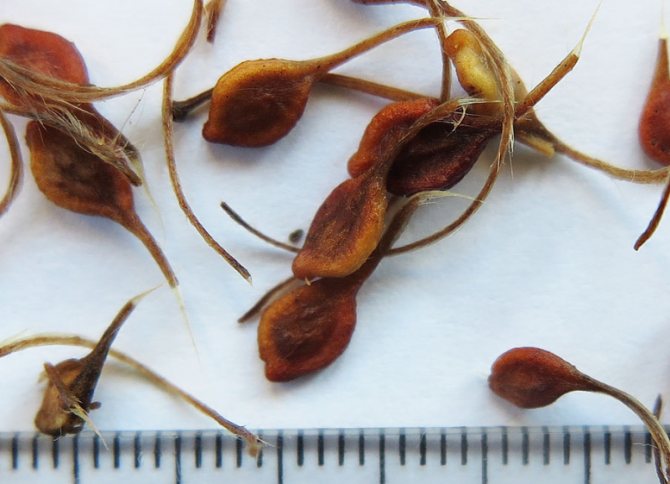

Oval clematis seeds with fly tails
The germination rate for all species is in an impressive time range. If the seeds are preliminarily prepared, then the period will approach the minimum possible. For example, in species with small seeds, seedlings will appear in 20 days, rather than 3 months.
Dense seed coats can be softened by bubbling:
- Dissolve 1 tsp in 200 ml of water. baking soda.
- Pour the solution into a half liter jar, place the seeds in it and connect the aquarium compressor.
- Bubble for 5-6 hours.
- Change the water to clean water and bubble the seeds again for 3-5 days, changing the water 3 times a day.
Stimulants will also accelerate germination. Immerse the seeds for half an hour in a solution of aloe juice with water (1: 1) or Epin, Zircon, HB-101, succinic acid (according to the instructions).
Spread
You can meet Manchu clematis most often in the northern hemisphere. It grows in forest areas, in steppes and meadows, it can be found along rivers and on their banks, on hillsides, rocks and cliffs. Clematis loves moisture, light and warmth.
It can reproduce in several ways:
- seeds;
- cuttings;
- dividing the bush;
- layering.


The plant began to be cultivated in the 16th century in Western Europe, although the Japanese began to do this even earlier. In the early 19th century, clematis gained popularity as a greenhouse plant.
Currently, there are a large variety of hybrid forms and types of clematis, some of which require special care.
Clematis Manchu is frost-resistant, it normally survives the frosts of the middle lane, but likes to be in the sun.
Did you know? If clematis is properly covered and protected from excessive moisture, it can withstand frosts down to -40
°
C.


How to grow clematis Manchurian from seeds
The seeds can be purchased at a specialty store - this is the easiest way for beginners to grow Clematis of Manchu from seed. Soak the purchased seeds in water for a week, then plant them in a container. To create greenhouse conditions, cover the container with plastic wrap. This will help maintain the optimum temperature. After a month and a half, shoots appear.
In the spring at 20 ° C temperature, in the presence of a couple or three leaves, it is recommended to take containers with seeds outside for "hardening".
Breeding history
Clematis (Manchurian clematis) is a wild plant from the buttercup family. It is found naturally in Russia, China, Japan. Clematis appeared in Russia at the end of the 19th century. They were used as greenhouse crops.In the USSR, the cultivation of vines, another name for the Manchurian clematis, began to be engaged in in 1950. For the first time, thanks to the breeder M.A. New varieties have been obtained by means of non-arabic hybridization. As a result of her work, more than 50 species of clematis, Manchurian hybrids, have been bred.
Testimonials
Olkhova Natalia Grigorievna, Rostov-on-Don
This year I decided to take seriously the design of my garden. We have a house with an attic, and therefore, under the balcony, I wanted to plant something weaving and blooming. My choice fell on Clematis Manchurian. I liked the plant very much, it is lush, beautiful and elegant!
Grigorova Nadezhda Vladimirovna, Saratov
In parks, you can often find bushes with white flowers along fences and hedges. From a friend I learned that it was Clematis Manchurian. I bought a seedling and planted it four years ago at my site. This is a completely unpretentious plant, but you should carefully monitor watering. And regular pruning of the bush will allow you to get a beautiful and lush plant in the end.

